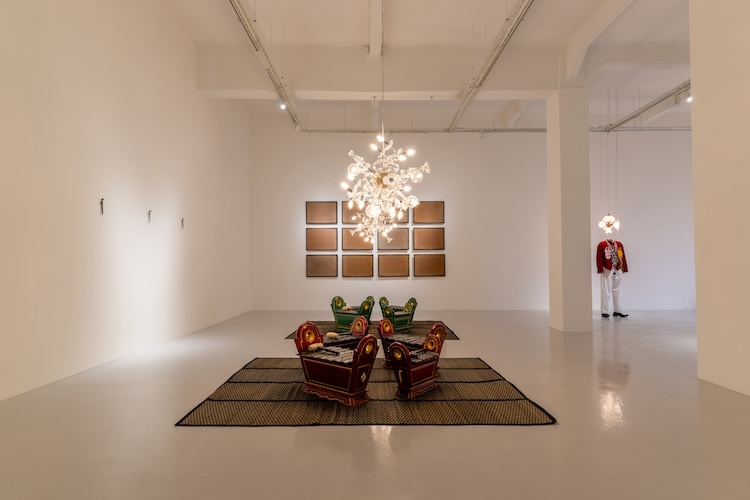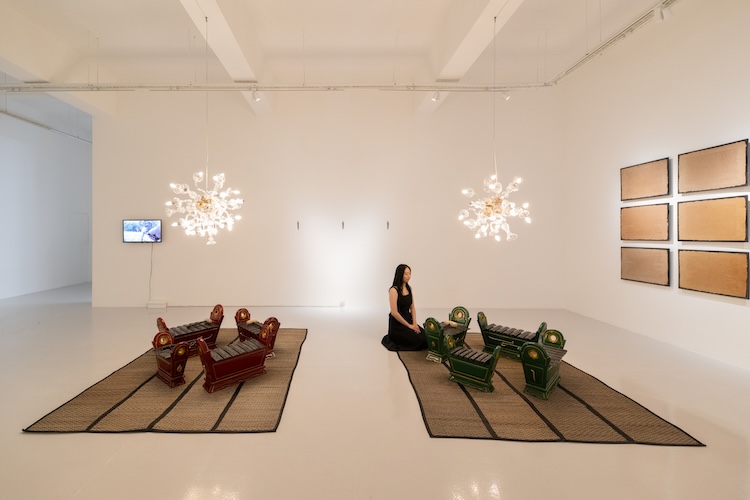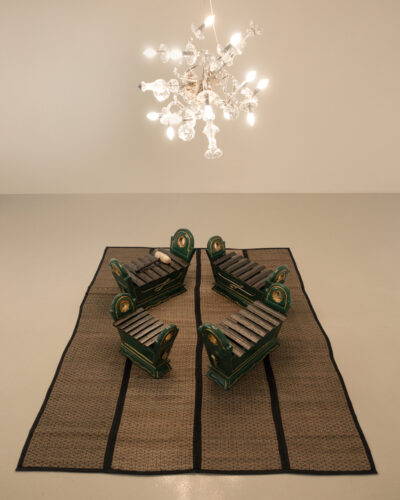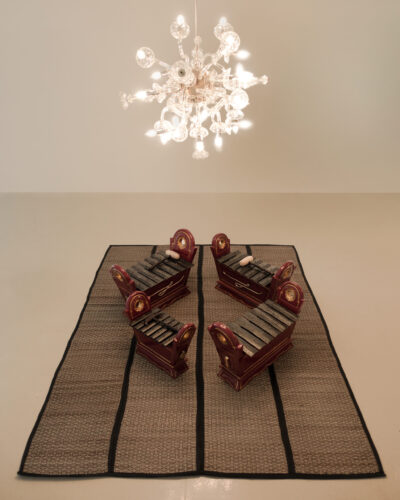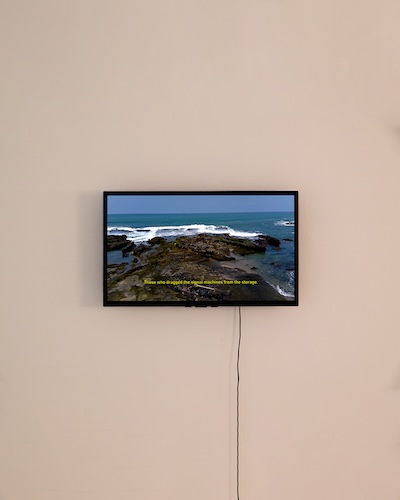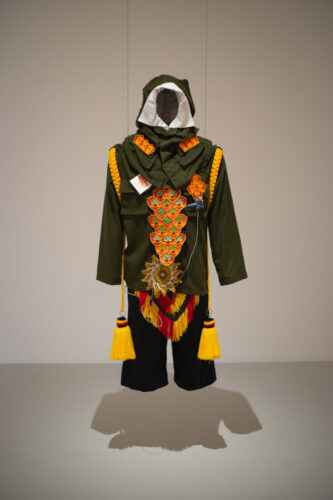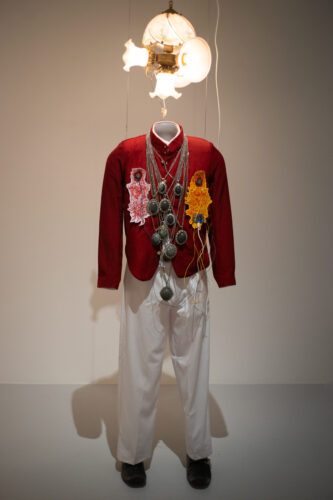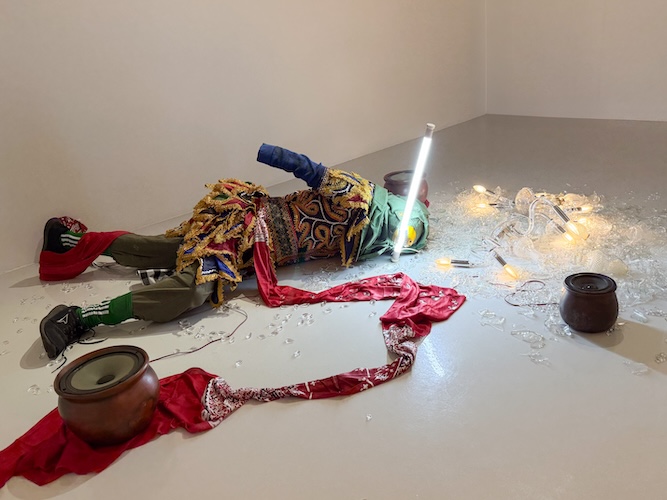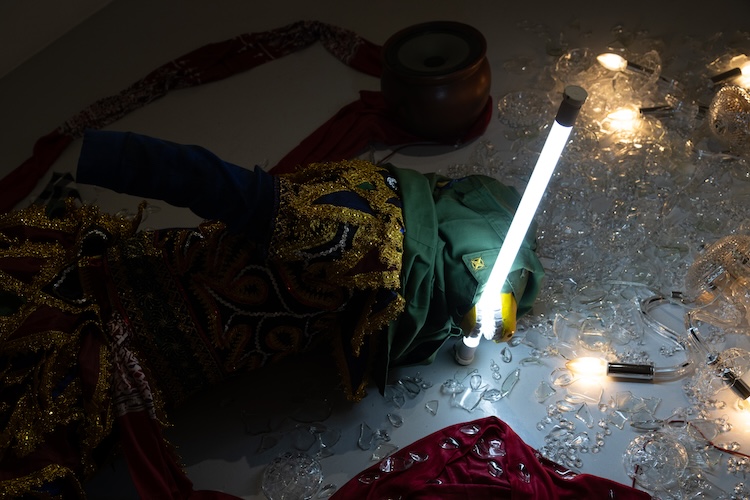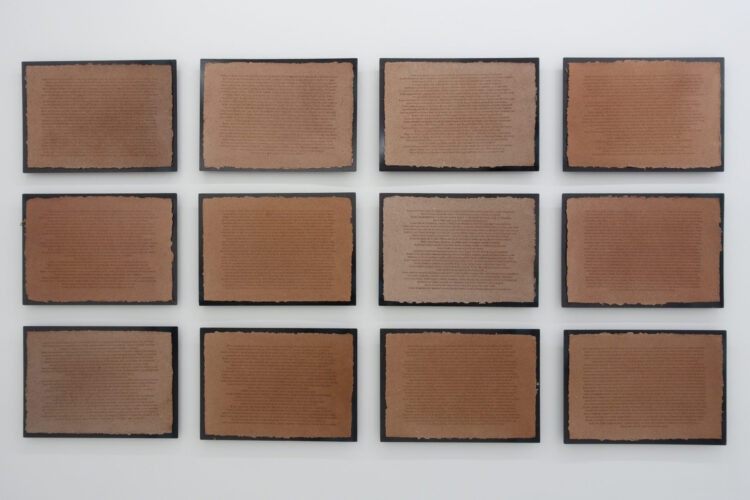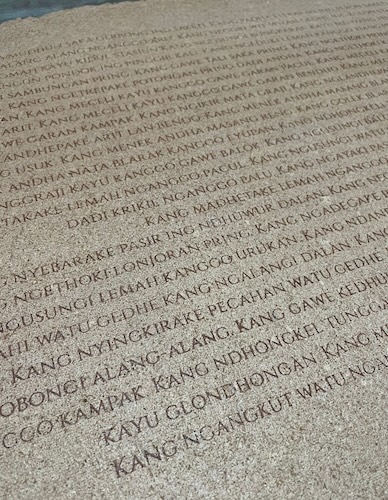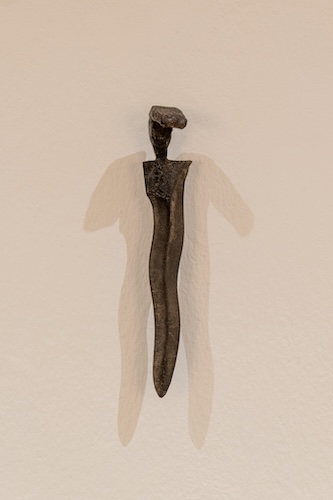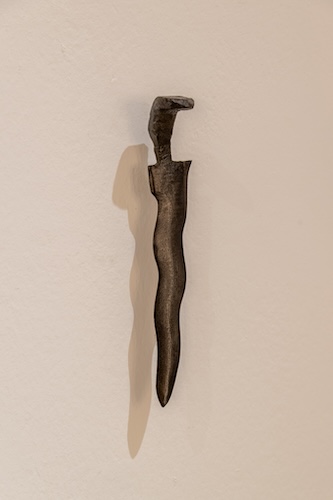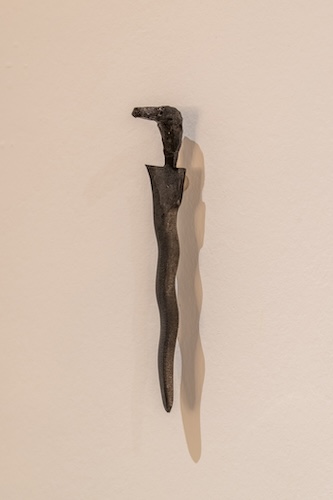Ames Yavuz is pleased to present Of Thousand, a solo exhibition by Indonesian artist, Jompet Kuswidananto. Imagined as a memorial, the exhibition bears witness to the thousands of unnamed forced labourers, rōmusha, who went missing during the Japanese occupation in Java during World War II.
Using the unresolved past as his source material, Jompet Kuswidananto has explored the complex sociopolitical history of Indonesia over the past 35 years, with a special focus on his home region of Java. Haunting objects, figures, sounds and utterances from pivotal moments of the country’s violent past, ranging from Dutch colonial rule and the Japanese occupation, to the authoritarian ‘New Order’ regime (1967-1981) and the ‘post-1998 sonic blast of democracy’ share a stage in the artist’s multi-media and immersive installation based works — that invoke ghosts as ghosts, without shepherding them back into the domesticated realm of the living.
Of Thousand began with a search. The artist’s grandfather was forcibly relocated in early 1943 and went missing. It is suspected that he was taken as a rōmusha, a forced labourer, to repurpose Dutch sugar factory railways in Central Java for the coal mining trade, connecting Saketi to Bayah in West Java — the deadliest Japanese war project on the island, taking tens of thousands of lives. With no official records of the labourers nor a formal search for the graves of the deceased, the memories of the lost lives were relegated to slip through the cracks of history and gradually fade along with their anonymised identities.
Of Thousand is rooted in the Javanese tradition ‘Nyewu’, a memorial rite held a thousand days after a person’s death to release their soul from earthly attachments onto the realm of the ancestors. This exhibition performs ‘Nyewu’ as both a spiritual and political gesture, to make space in the landscape of memory for the unarchived rōmusha deaths and their unfinished business.
The works transform remnants from the railway tracks. The steel rail, an instrument of double violence from colonial extraction and imperial forced labour, is reworked into tone plates of a gamelan installation — an ensemble of traditional Indonesian instruments played at ceremonies. The gamelan is used here as a vessel to transmit discordant feelings of not just grief, longing, and loss, but also of recognition and healing.
Some wooden rail sleepers are transformed into prayer beads, and others are pulped into paper on which a thousand kinds of physical acts are written out, acts imagined to have been carried out by the rōmusha. These words also act as lyrics for a song played within the gallery space. The gamelan is installed nearby hanging ‘ghost’ figures, dressed in costumes decorated with traces from historic railway constructions.
Not seeking to reconstruct a precise history in the absence of archives, Of Thousand embraces the inexactness of memory. In the voids and interstices of these recollections, the works offer a resonant space where the echoes of the unarchived and the erased may linger a while longer.
A performance featuring Dr Jan Mrazek and the NUS Singa Nglaras Gamelan Ensemble
will open the exhibition at Ames Yavuz Singapore on 18 October 2025, 4:30–5:30pm. Alongside the exhibition, works by the artist are on view at the Setouchi Triennale (3 October – 9 November 2025).
